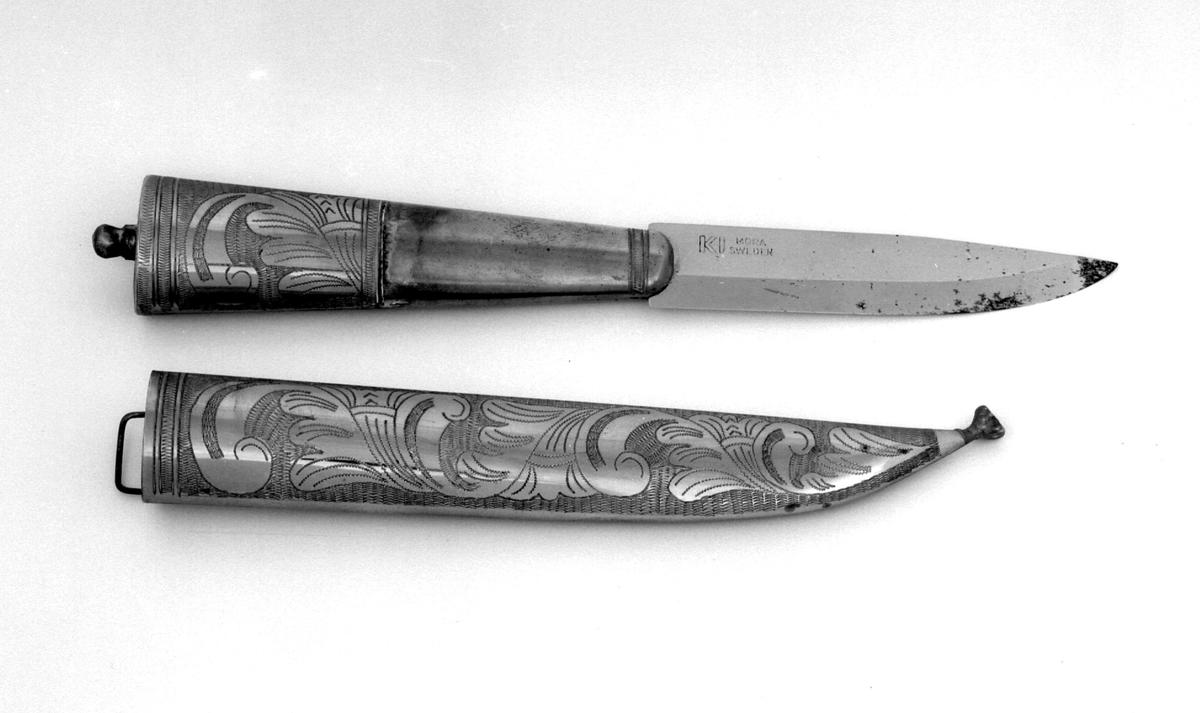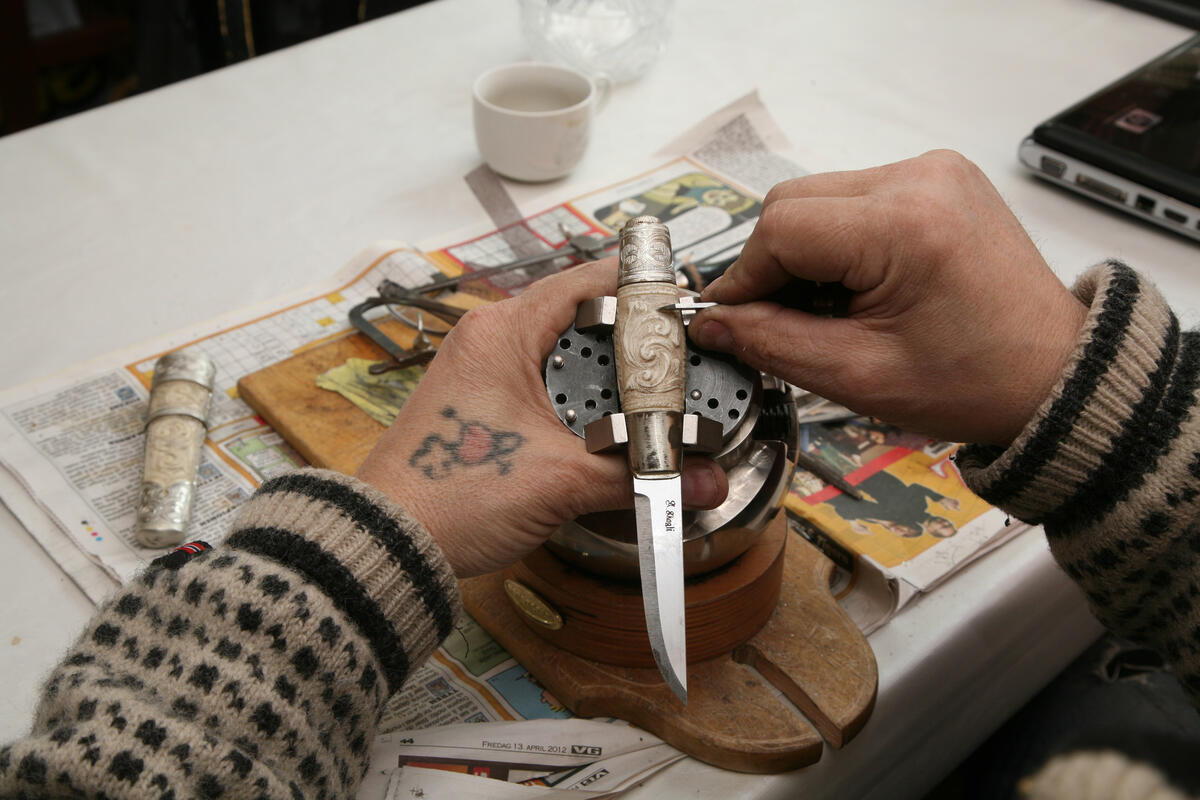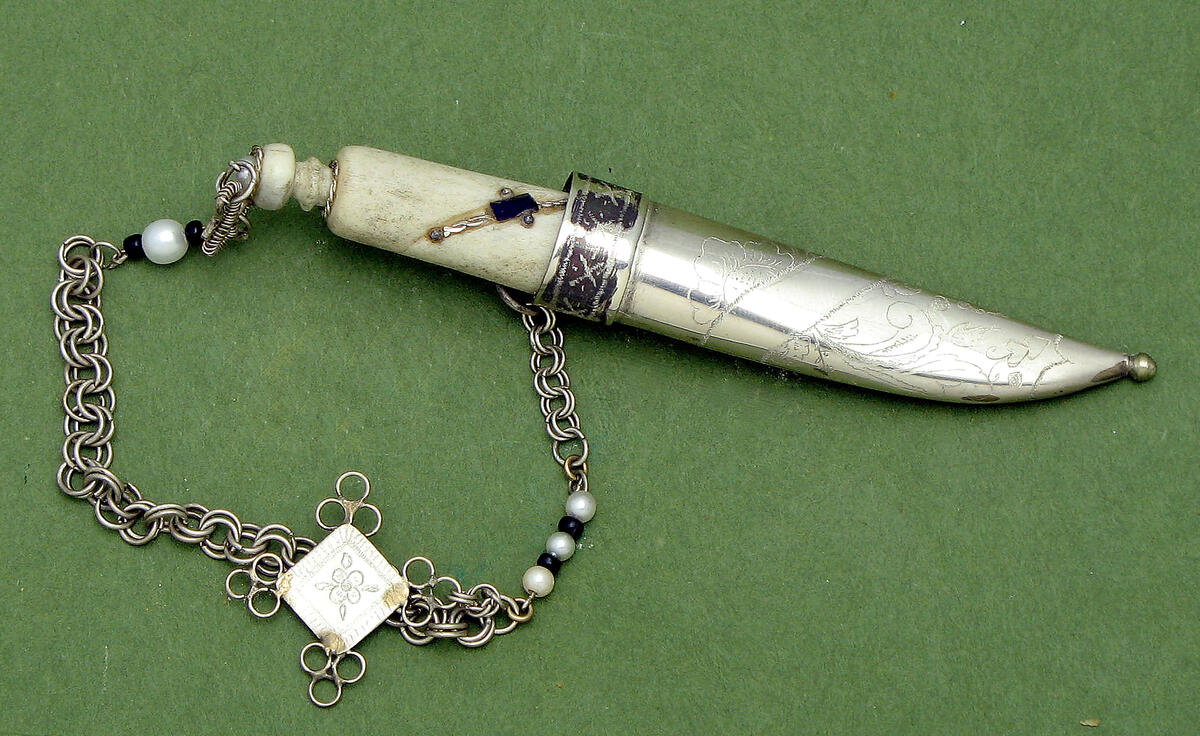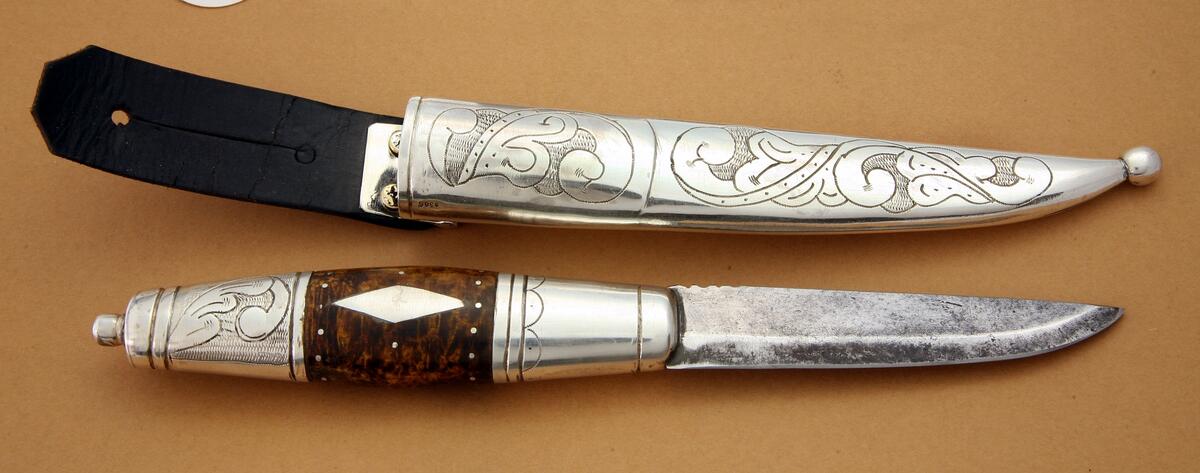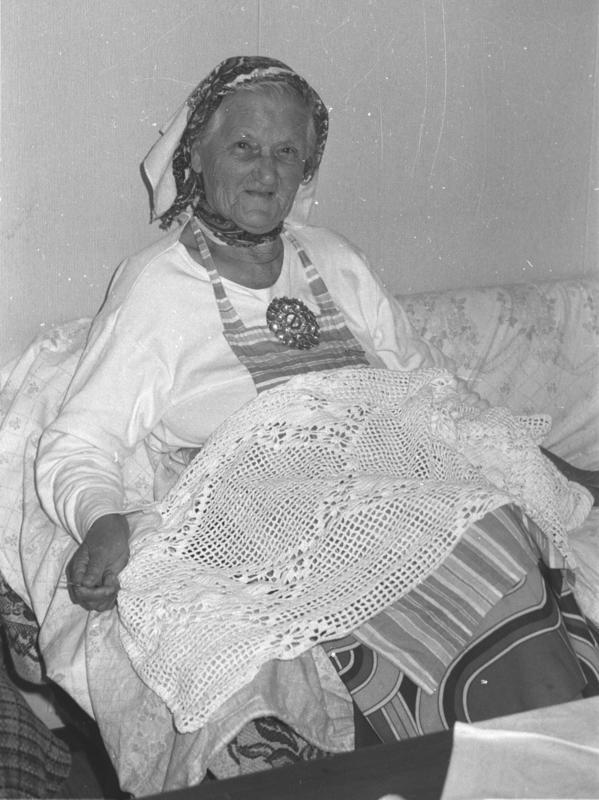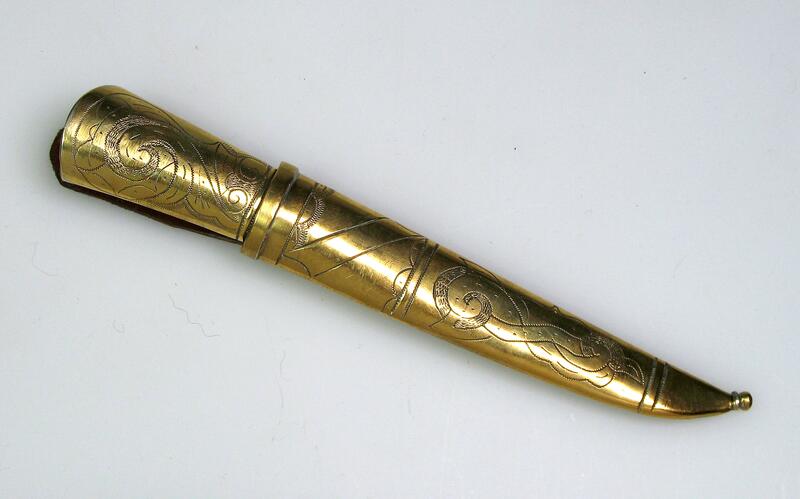By Per Thoresen
-
Jonny Borge engraving a knife, 2012. Foto: Anno Glomdalsmuseet
Tools, production methods and quality
Most knife makers use a minimum of tools, even when they work from home: knife, file, scissors, hammer, awl, gimlet, a couple of engraving needles, and preferably the typical anvil with long, thin horns. The knives are often made in the most basic environment imaginable.
Blades
The Tater knife makers rarely forged the blades themselves. They used mostly standard, factory-produced Swedish or Norwegian blades. The explanation for so few hand-forged blades being used is that the knife maker did not want another craftsman to have made any part of his knife.
Side guards
Side guards and waistbands are almost always nicely shaped from a neatly bent metal plate. The reason the quality of these details is high, even when the knife is otherwise very simple, is that the metal was bent on the "flanging machine", a device the tinsmiths used.
Bead decoration
Traditional Norwegian knives often have a spherical bead at the end of the handle and at the tip of the sheath. The vast majority of Tater knives also have such beads, and they are made in a characteristic way. "Tater beads" are made as follows: instead of forming a bead from a thick piece of metal, a strip of metal is wrapped around the end of the tongs, soldered and filed to its final shape. This gives the bead a spiral pattern. This method was also used by some non-Romani but is still considered typical of Tater work. It is rare to see a Tater/Romani knife without such spherical beads.
